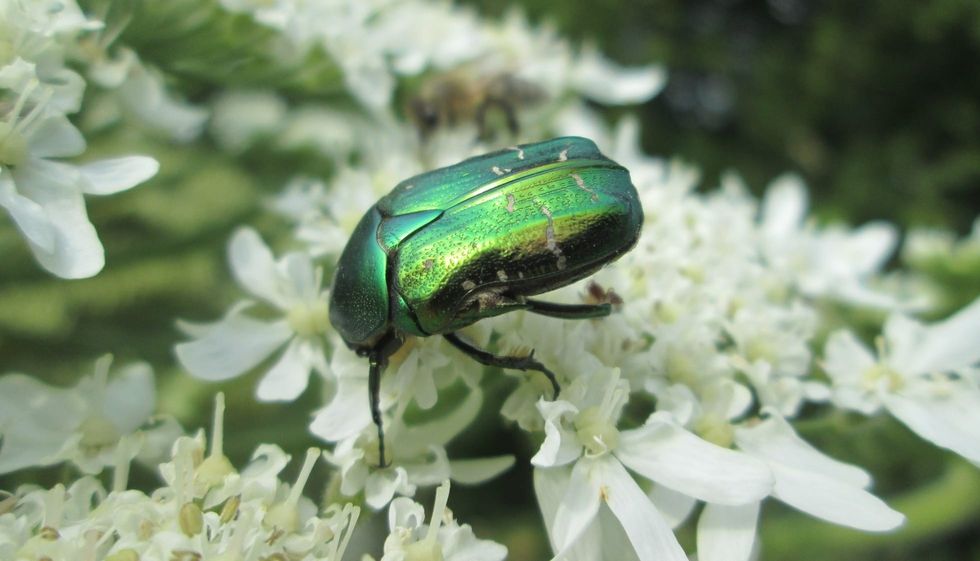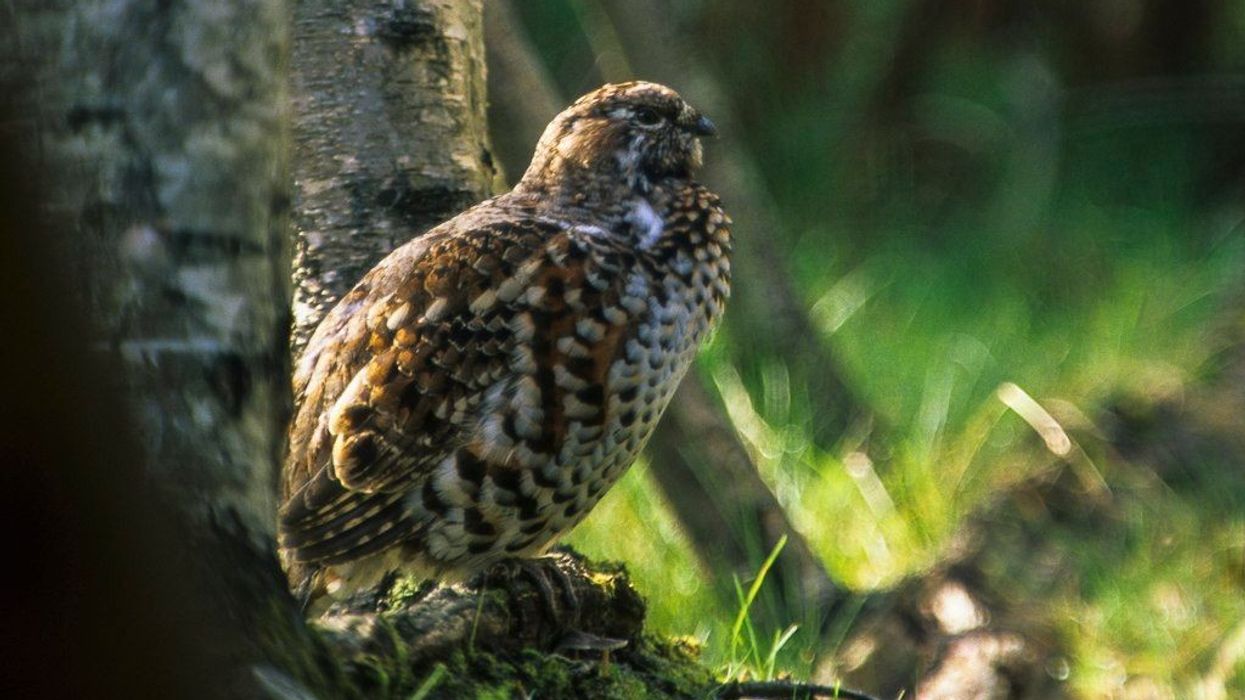These distinct-looking creatures are depicted a lot in anime cartoon series; beetles are arthropods that add beauty to our gardens. But at the same time, one needs to be careful since Rose Chafers feed on plants and destroy them.
Rose Chafer beetles, given their name, are a rose-loving species of beetle. With their shiny appearance, Rose Chafers look like creatures belonging to royalty. This fact file contains information about Rose Chafer Macrodactylus subspinosus, Cetonia aurata, rose dwelling species of beetles.
Here are some of the most interesting facts about the Rose Chafer beetle which is also considered a pest. Afterward, do check our other articles on blue dasher facts and atlas beetle facts.
Rose Chafer Interesting Facts
What type of animal is a Rose Chafer?
Rose Chafer is a beetle similar to the Japanese beetle and is a member of the species Subspinosus. This garden pest can be found on the rose bed feeding, and infesting the area. Rose Chafers are also named the villains of the rose bed surroundings.
What class of animal does a Rose Chafer belong to?
A Rose Chafer is a metallic color belonging to the class insect and phylum Arthropoda of the kingdom Animalia. These insects have shiny bodies and two pairs of jointed appendages that assist them in crawling on trees and shrubs.
How many Rose Chafers are there in the world?
These beetles breed in good numbers. There's no proper count of their number but one can say that infestation of these beetles in an area could see 100s of these crawling around in the surrounding area.
Where does a Rose Chafer live?
These broad beetles are spotted in a variety of habitats such as grasslands, scrubs, and woodland areas where and especially where the bed of roses is found.
What is a Rose Chafer's habitat?
Rose Chafers are seen crawling on rose petals in summer and live and survive on surrounding leaf litter. Rose Chafers reside and grow on bushes and small plants, feeding and surviving in the localities where a variety of flowers, especially roses, are grown.
Who does Rose Chafers live with?
These beetles are usually spotted wandering alone but Rose Chafers may be seen feeding in groups and surviving in their natural habitat.
How long does a Rose Chafer live?
Beetles generally have a short life cycle. The larvae of the Rose Chafer beetles take about two years to molt and convert into adult beetles. Adult beetles fly in May and June earlier than the Japanese beetles. Post mating, Rose Chafers may survive for about 4-6 weeks.
How do they reproduce?
In the mating season, the female beetle lay eggs on the organic debris. The eggs hatch in around two weeks.
They are then converted into larvae which are C-shaped and feed on leaf litter, leaf mold, decaying woods, manure, and composite. The larvae then pupate twice before the beginning of the autumn season around July month. These larvae then convert into adult beetles and are ready for mating in the spring season.
What is their conservation status?
The Rose Chafer is considered a vulnerable species and is on the verge of extinction in the wild environment. Under the Biodiversity Action Plan species act, various organizations are making efforts and creating action plans for saving these beetles from extinction.
Rose Chafer Fun Facts
What does Rose Chafers look like?
An adult Aurata has a metallic, shiny, and hard-covering exoskeleton. Rose Chafers have two pairs of appendages and a pair of wings that assists them in flying.
Between the wings, there is the presence of scutellum which is present in the shape of V. In natural sunlight, they appear shiny green and when seen through the polarized light they appear dark black. While the young larval stage has a C-shaped body that is covered in hair and has segments for its body.
How cute are they?
These are cute organisms that attract the attention of insect lovers. Their shiny metallic outer part of the body is one of a kind and looks even more attractive when they're seated on a rose petal under the summer.
Their popularity has increased over a period since Rose Chafers are beautifully depicted in cartoon shows and especially in Japanese cartoons, namely anime.
How do they communicate?
Beetles, just like ants, are well known for communicating through chemical pheromones. This characteristic is common to most of the arthropods belonging to the class Insecta. Male Rose Chafers locate the female Rose Chafer through their scent. Another way of communicating with other beetles is by using their mouthparts to produce sounds by scrapping them together.
How big is a Rose Chafer?
An average Rose Chafer has a length of up to 0.75 in. Rose Chafers are equal in size to that of a cockroach. Sometimes in the dark, when there is no light to spot their shiny bodies this pest is often mistaken for a cockroach.
How fast can Rose Chafers move?
Rose Chafers just like other beetles crawl very fast. Rose Chafers can cover a distance of about 1.5 meters in one second which corresponds to a speed of 3.4 mph (5.4 kph). They also fly but very few times they are spotted flying.
How much does a Rose Chafer weigh?
Just like most of the members of class Insecta adult Rose Chafers are lightweight creatures. An adult beetle may weigh around a gram or less.
What are the male and female names of the species?
Male and female Rose Chafer beetles do not have any separate names. Adult Rose Chafers are referred to as beetles in general and males and females in common speech. Females die after they lay eggs in the soil.
What would you call a baby Rose Chafer?
A baby Rose Chafer is a larva. These are C-shaped creatures and have small head and wrinkled body covered in hair.
Their body is segmented and they have tiny legs for crawling. The larvae overwinter in the soil where the larvae feed on roots of weeds and grass and around spring they pupate under the soil and emerge as adults from the soil between May and June. Until the fall season arrives, the grub feed on roots.
What do they eat?
Since these beetles wander around gardens and woodlands, the adults feed on pollen and nectar from flowers like roses and iris. The larvae feed on the roots of weeds and grass. They are not predators by nature and hence are not a threat to other insects in their vicinity.
Are they harmful?
A green Rose Chafer Beetle is not harmful to humans but can cause damage to their gardens! These beetles, when bred in large numbers in an area, tend to infest the rose beds and other flowers in the locality and destroy them by feeding on them.
Would they make a good pet?
Adults need a specific environment for survival. They need a warm environment with food to feed on.
If one can mimic an environment with soil, organic debris and constantly provide these beetles with flowers and pollen for nutrition and growth then they can keep them as pets. Otherwise, it is not advisable to have them indoors since they need open, garden areas for survival.
Did you know...
Rose Chafer belongs to the order Coleoptera, which houses more than 300,00 species of beetles, the largest known order to date. Since these beetles feed on pollen, they are important pollinators of certain flower species.
How to get rid of Rose Chafers
A very common way of avoiding and getting rid of them is the use of insecticides. During the summer season keep check for these beetles in your garden because they tend to arrive in a big number and destroy the whole garden by breeding and feeding there.
Are Rose Chafers pests?
Yes, these beetles are pests. They infest the gardens in various localities, especially during summer. Their diet consists of flower petals and organic remnants, hence they tend to arrive in larger numbers at once in gardens and eat up the flowers there.
Here at Kidadl, we have carefully created lots of interesting family-friendly animal facts for everyone to discover! For more relatable content, check out these ambush bug facts, or soldier beetle facts.
You can even occupy yourself at home by drawing one on our Rose Chafer coloring pages.










